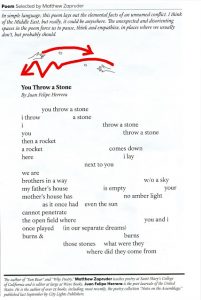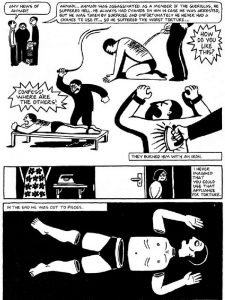The films that circulate through our society have an astounding ability to shape our perspectives of the world around us. Actors and actresses, doing nothing but their job, acting, present society with a visual representation of events; a place where what we have heard can be transformed into what we can see. Recently in my ASTU 100 class here at the University of British Columbia, we watched the movie American Sniper. If you have seen the movie you would know it does very well to represent the horrific consequences that come with war, and it pays tribute to the sacrifice so many brave men and women must make in fighting for their country. War movies such as American Sniper act as a platform for citizens of western society to access a visual representation behind the events occuring in war zones in other countries. The problem with using these popular movies as sources of information is that it leads to strong biased beliefs and leaves people with the perspective of a single view. Movies are not created to convey information, they are created to attract attention and to gain popularity, so when making decisions about our beliefs it is important we harness information from other genres than movies.
When I was around eleven I asked an adult why there were terrorists in the middle east. They told me it was because they had corrupt minds and they hated our freedom. In American Sniper the main character, Chris Kyle, while watching 9/11 on the TV says, “look what they did to us”. America, in the film is referred to as “the greatest country in the world” and the terrorists in Iraq are referred to as savages multiple times. This shows how the film acts to divide the east and the west, strengthening the us-them dichotomy. Additionally, the film does not pay tribute to the thousands of civilian deaths resulting from American invasions, nor does it give any reasons behind the terrorists residing in Iraq. I am by no means a sympathizer of terrorism, but I think the representation of them as savages that hate our freedom is inaccurate. Terrorism is roughly defined as using violence as a means to pursue political aims. In the film American Sniper terrorism is redefined as violence caused by evil savages with no goal but to cause pain and suffering. This representation of terrorism acts to eliminate any validity behind the terrorists political aims. The film is structured in a manner that it gains support for the war in Iraq and dehumanizes citizens in Iraq. It portrays America as good and Iraq as evil. In reality war is much more complicated than good and evil, and to depict the war this way eliminates the potential of viewing it from an Iraqis perspective.
When countries are at war with one another the way we perceive life in other countries changes. We begin to see life in the countries we are at war with as invaluable and a threat to our own well being. Movies like American Sniper enforce these norms and can lead to rapid growth in racism and American nationalism. Because American Sniper and other movies like it have been seen to have high popularity in our society, we need to be critical of the message it is sending to our society and recognize the representation of war we are presented with can be very flawed.





